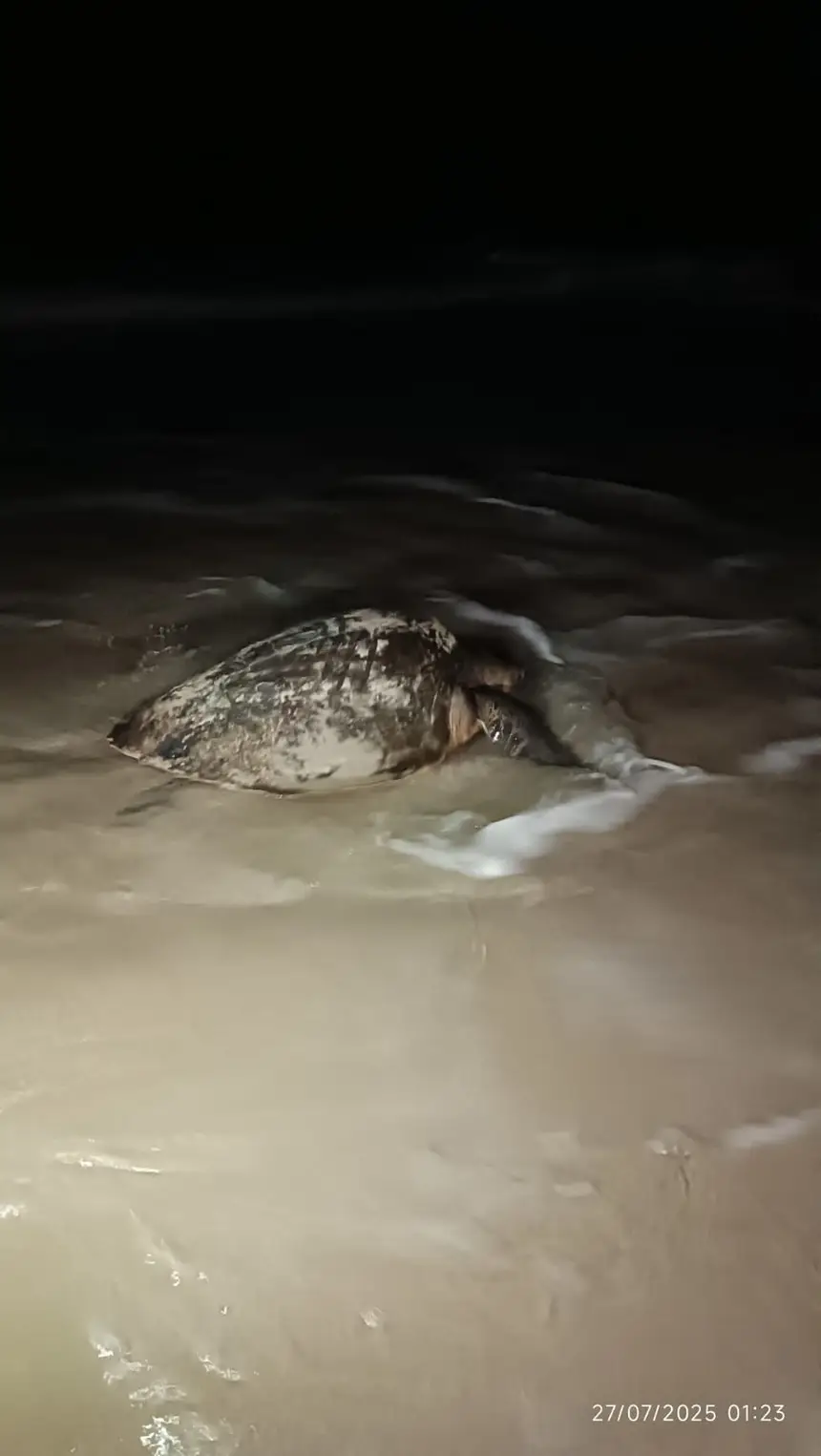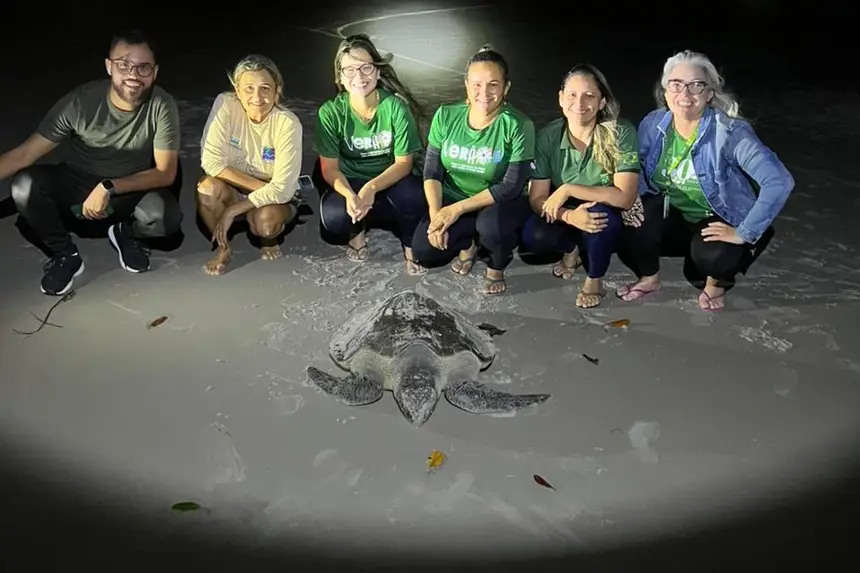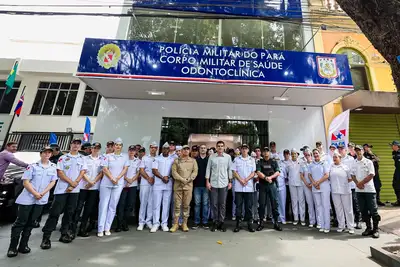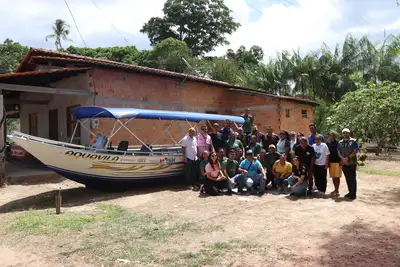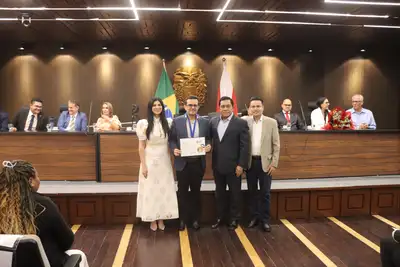Actions in Algodoal and Salinas Reinforce Marine Turtle Conservation on the Coast
Pará is situated on an essential migratory route for various species of marine turtles, such as the green turtle and the olive ridley turtle.
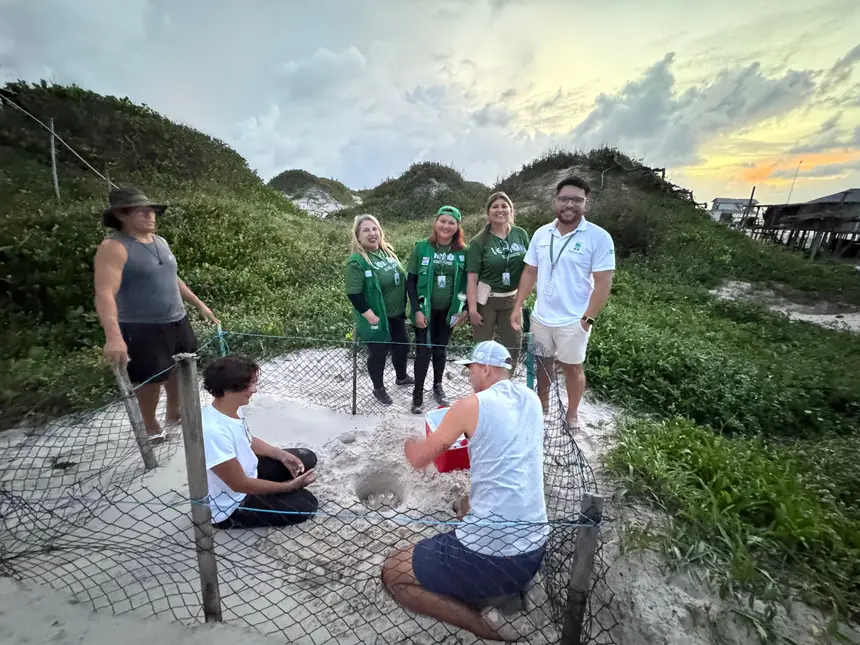
The coast of Pará has been the stage for important conservation actions involving the monitoring and protection of marine turtles, especially during the breeding season of these animals. The Government of Pará, through the Institute of Forest Development and Biodiversity (Ideflor-Bio), along with various partners, has intensified activities in strategic areas of the Atlantic coast, reinforcing the commitment to biodiversity preservation.
Ideflor-Bio emphasizes that Pará is situated on an essential migratory route for various species of marine turtles, such as Chelonia mydas (green turtle), Lepidochelys olivacea (olive ridley turtle), and even the rarely seen Dermochelys coriacea (leatherback turtle).
“With a coast rich in biodiversity and sensitive ecosystems, Pará stands out as one of the most important fronts for marine turtle conservation in Brazil. Recent actions reinforce the state's role as a protagonist in the protection of these endangered species and reaffirm the commitment of the Government of Pará to environmental balance and the sustainability of its natural resources,” emphasized the president of Ideflor-Bio, Nilson Pinto.
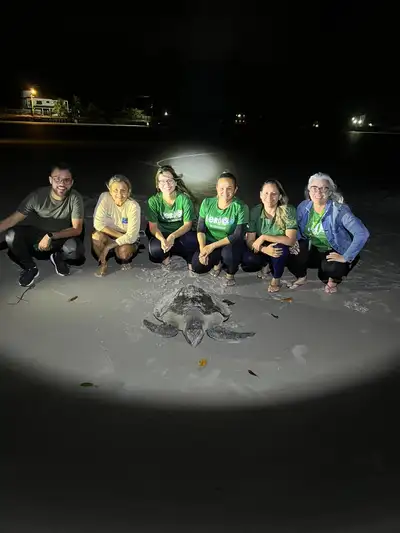
One action resulted in the transfer of 115 green turtle (Chelonia mydas) eggs to a safe location in the Environmental Protection Area (APA) Algodoal-Maiandeua, in the municipality of Maracanã, on Friday (25). Teams from Ideflor-Bio closely monitored the activity conducted by ARVUT Meio Ambiente Ltda and the Instituto Bicho D’Água. The measure aims to ensure that incubation occurs under ideal conditions, protecting the eggs from natural and human risks, such as high tide, trampling, and predator action.
The APA Algodoal-Maiandeua is one of the most important regions for turtle conservation in the state. In addition to the frequent presence of Chelonia mydas, there are records of the leatherback turtle (Dermochelys coriacea) in the area, a species threatened with extinction and considered the largest among marine turtles. The most recent sighting of this animal in the region occurred in 2023, reinforcing the ecological importance of the archipelago as a resting, feeding, and breeding area for these reptiles.
On Saturday (26), another significant moment of environmental actions occurred in Salinópolis, northeastern Pará. During the night monitoring at Praia do Farol Velho, technicians from Ideflor-Bio, together with the ARVUT team, identified a Lepidochelys olivacea (olive ridley turtle) in the process of nesting. The presence of the species in the section opposite the area isolated for vehicles at Praia do Atalaia, specifically in the region of Ponta da Sofia, demonstrates that the coast still offers natural conditions for reproduction, provided there is care and respect from the population.
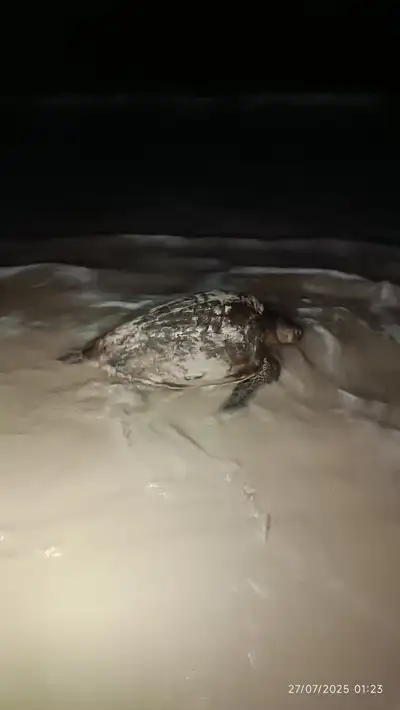
Care - The action reaffirms the need for strict measures to control access of motorized vehicles to the beaches, especially during the nesting period of turtles. “The conservation of turtles is a continuous effort that requires the involvement of society. We are intensifying our work in environmental education and direct protection of nests, to ensure that more hatchlings reach the sea safely,” highlighted the president of Ideflor-Bio, Nilson Pinto.
The monitoring of marine turtles is directly integrated into the Turtle Conservation Program of Pará, led by Ideflor-Bio. The initiative aims to preserve the 24 species of turtles identified in the state, both freshwater and saltwater, through projects and actions aimed at protecting these animals in their natural habitats. In addition, various partnerships with public institutions, private entities, and civil society organizations have been established to ensure the effective implementation of conservation measures.
Mission - According to the director of Management and Monitoring of Conservation Units, Ellivelton Carvalho, “these actions are fundamental to protect the reproductive cycle of turtles and also to generate technical knowledge that helps us improve conservation strategies. Each saved nest is a victory for biodiversity,” stated the director of Management and Monitoring of Conservation Units of Ideflor-Bio, Ellivelton Carvalho.
In addition to direct protection of the species, the work also has an educational character. Residents, tourists, and vehicle drivers receive guidance on the importance of avoiding circulation in nesting areas, maintaining beach cleanliness, and respecting environmental signage. The actions are part of a continuous effort to build a marine preservation culture in Pará, combining technical knowledge and social engagement.


